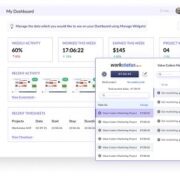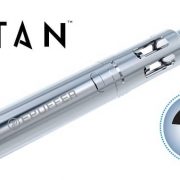In today’s fast-paced business world, operational efficiency is paramount. Every minute counts and every second you save can directly impact your bottom line.
With such increased competition, businesses are looking for ways to increase operational efficiency to remain competitive and stay ahead of the competition.
Fortunately, technology has made it easier than ever to improve operational efficiency. From cloud storage and collaboration tools to automation software and customer service platforms, several must-have tools can help businesses streamline their day-to-day operations.
This blog will discuss the importance of operational efficiency and explore some of the top tools that can help you improve your business’s efficiency and productivity.
By leveraging these cutting-edge tools, businesses can work faster, smarter, and more efficiently.
Let’s get started by first understanding.
What Is Operational Efficiency?
Operational efficiency ensures that an organization’s resources are used properly and efficiently to achieve its goals.
This involves streamlining internal operations and processes to reduce waste, and costs, and maximize productivity for achieving the desired results.
What Is The Importance Of Operational Business Efficiency?
Operational efficiency is essential for businesses to stay competitive in today’s dynamic market.
Here are some reasons why operational efficiency is so important.
-
It Makes Strategic Planning Easier
By streamlining processes and clearly understanding business operations, strategic planning becomes much easier as you have an accurate picture of your current situation. This makes it possible to create realistic goals and objectives that are achievable promptly.
-
It Enhances Quality
When operations are efficient, employees spend less time on unnecessary tasks or resolving issues which can result in higher quality products or services being delivered to customers.
Additionally, fewer errors mean improved customer satisfaction and potentially increased business sales.
-
Improves Cost Savings
Streamlined processes often lead to cost savings by reducing waste and improving organizational efficiency. This means more money for other areas, such as marketing, research, and development, or investing in the business itself.
-
Increases Productivity
When all activities related to a production run smoothly with minimal downtime, it increases overall productivity helping companies meet their targets faster while freeing up resources that can be used elsewhere within the organization
-
Improves Flexibility
By adopting best practices and streamlining operations, businesses can quickly adapt to market or customer demand changes.
This allows companies to remain competitive and respond to the needs of their customers quickly and efficiently.
Now that you understand the importance of operational efficiency, let’s look at tips for measuring operational efficiency.
Navigating the Path to Efficiency: A Practical Approach to Measuring Operational Performance
| Step | Description |
| 1. Identify Key Performance Indicators (KPIs)
2. Collect Data |
Determine the metrics that will be used to measure operational efficiency. Examples include productivity, lead time, inventory turnover, and customer satisfaction.
Gather data on the KPIs identified in Step 1. This data may be collected manually, automatically, or a combination of both. |
| 3. Analyze Data | Use statistical methods or software to analyze the data collected in Step 2. Look for trends, patterns, and areas for improvement. |
| 4. Compare to Industry Benchmarks | Research industry benchmarks for the KPIs identified in Step 1 and compare your results to those benchmarks. This will give you an idea of how your company measures up against others in your industry. |
| 5. Identify Opportunities for Improvement | Use the results of your analysis to identify areas where improvements can be made to increase operational efficiency. |
| 6. Implement Changes | Based on the opportunities for improvement identified in Step 5, implement changes to your processes and systems to improve operational efficiency. |
| 7. Monitor Progress | Regularly monitor progress and track the KPIs to determine the impact of the changes made. Continuously evaluate and adjust your processes and systems as needed. |
Note: The frequency of data collection, analysis, and monitoring will depend on your business’s specific KPIs and needs.
Reason & Risk Involved In Not Improving Operational Efficiency
A lack of operational efficiency can cost businesses time and money. Without optimizing processes, businesses cannot achieve maximum productivity or customer satisfaction.
Here are some risks and consequences that could arise if a business fails to improve operational efficiency:
-
Increased Costs
Poorly managed operations can be costly, with businesses spending more on materials, labor, and overhead expenses. This leads to higher costs for customers and reduced profits for the company.
-
Loss Of Customers
Without efficient processes, companies struggle to keep up with customer demand or delivering products and services on time.
This leads to unhappy customers, resulting in customers switching to a competitor or even boycotting the business altogether.
-
Reduced Productivity
Clunky processes lead to slow turnaround times, which means less work is completed in the same amount of time. This results in lower productivity, which can negatively impact profitability and competitiveness.
4. Low-Quality Output
Inadequate management of resources can lead to poor quality output or high errors throughout a process. This causes production delays and lowers customer satisfaction as they receive sub-par products or services from the business.
-
Wasted Resources
Poorly managed processes can lead to the inefficient use of resources such as materials and personnel, which results in wasted time and money. This can significantly impact bottom line of a business, as resources are not used to their full potential.
As you can see, many risks are associated with not improving operational efficiency.
Now that you understand the importance of operational efficiency and the risks involved, let’s discuss the 7 must-have tools to improve operational efficiency.
Simplifying Business Operations: The 6 Tools Every Company Needs
1) Project Management Tools
According to market research, the global project management software market was valued at USD 5.37 billion and is expected to grow at a CAGR of 10.67% over the next five years to reach USD 9.81 billion.
This is because project management helps organizations to effectively complete projects on-time while staying within budget and meeting the required quality standards.
It helps organizations to plan, organize, and manage resources that allow companies to be more efficient and productive.
Benefits Of Using Project Management Tools Are
- Streamlines project workflow
- Improves quality and accuracy of projects
- Enhances collaboration and communication
- Allows organizations to make better decisions
- Promotes resource optimization
Some of the best tools for project management include Workstatus, Asana, and Basecamp. These tools ensure that projects are completed on time with minimal errors and can help increase efficiency and manage a project efficiently.
2) Task Automation Software
The Deloitte study found that 36% of organizations already automate workflows using task automation software, and 50% are planning to automate more repetitive tasks within their organizations, as task automation software helps companies to increase their efficiency and save time.
Task automation software reduces the need for manual processes. It allows organizations to manage tasks in a more organized way, resulting in improved customer service, higher productivity, and ultimately cost savings.
Benefits Of Using Task Automation Software Are:
- Reduces the need for manual labor
- Increases operational efficiency
- Saves time and money
- Enhances customer service quality
- Improves task management
Some of the most popular Task Automation Software programs, including Zapier, Jotform, and Microsoft Power Automate, automate tasks across multiple applications and allow for a more efficient workflow.
3) Cloud Storage Solutions
According to Apps Run The World, the current value of cloud software is $153.6 billion in 2023. By 2025, it is expected to reach $168.6 billion as cloud storage solutions provide organizations with the ability to store data and files securely in an offsite location.
Allowing for easy access from any device at any time, helping firms to access their data quickly through which they can make better and informed decisions that lead to improving operational efficiency.
Benefits Of Using Cloud Storage Solutions Are:
- Offers secure storage for data
- Enhances collaboration between team members
- Allows for easy access from any device
- Increases efficiency and productivity
- Reduces operational costs as no additional hardware is required
Some popular cloud storage solutions include Dropbox, Google Drive, and Microsoft OneDrive. These tools allow teams to securely store files in an offsite location that can be accessed from anywhere for easier collaboration and improved efficiency.
4) Customer Relationship Management (CRM) Software
According to Grand View Research, the global customer relationship management market size was USD 58.82 billion in 2022.
It is projected to grow by 13.9% from 2023 to 2030 due to the convenience provided by CRM software to the organization to manage their customer data, relationships, and interactions in a more effective manner. Analyze data insights for better decision making and customer service.
Benefits Of Using CRM Software Are:
- Improves customer service
- Enhances sales productivity
- Helps increase customer loyalty
- Allows for better data analysis
- Increases marketing efficiency
Some popular CRM solutions include monday.com, Zendesk CRM, and Pipedrive CRM, which allow companies to track customer information and interactions, enabling businesses to deliver better customer service experiences that result in increased sales.
5) Workforce Management Software
As per strait research, the global workforce management software market size was USD 7.5 billion in 2021, by 2030, it is expected to reach USD 12.5 billion, growing at a CAGR of 6.5%.
This shows that a high no. of companies are now moving towards the adoption of workforce management software for various operations. This software helps them resolve inefficient time tracking, scheduling, payroll, and attendance monitoring.
Moreover, workforce management software simplifies the process of managing and tracking employee performance, which helps employers get a better view of their employees’ productivity and performance for better decision-making.
Benefits Of Using Workforce Management Software Are:
- Streamlines time tracking process
- Improves employee engagement
- Enhances the scheduling process
- Increases employee productivity
- Keeps management updated with employee performance
Some popular Workforce Management Software programs include, Timedoctor, and Rescuetime. These tools help organizations to more effectively manage their workforce and ensure employees are performing up to standards.
6) Collaboration Tools
According to Apps Run The World, the global online collaboration market is expected to grow from $12.4 billion in 2019 to $13.5 billion in 2024.
The reason is the increased demand for collaboration tools during the pandemic and in the work culture of hybrid and remote workforces.
Such software helps organizations to collaborate and communicate better for smoother workflow operations and enhance overall productivity.
Benefits Of Using Collaboration Tools Are:
- Improves communication and collaboration between teams
- Enhances remote working capabilities
- Allows for better workflow management
- Reduces organizational costs associated with travel
- Increases employee engagement and productivity
Some popular Collaboration tools include Skype, Zoom, and Microsoft Teams, which allow teams to communicate in real-time and collaborate on projects more efficiently. These tools help organizations to be more productive while working remotely or in hybrid work environments.
These are the 6 tools that every company needs to simplify its business operations and become more efficient. These tools help organizations to stay organized, improve communication, and boost productivity while reducing costs.
Now that you know about the tools, let’s move on to the checklist that you need to follow while choosing such software for your organization
A Checklist For Choosing The Right Tools For Your Business
- Budget- The amount of money you are willing to spend on tools for your business.
- User-Friendliness- The ease of use and accessibility of the tool for your employees and customers.
- Integration- The ability of the tool to integrate with your existing systems and workflows.
- Scalability-The capacity of the tool to grow and adapt to the changing needs of your business.
- Security-The level of protection and privacy provided by the tool for sensitive data and information.
- Customer Support-The availability and quality of customer support and training resources.
- Features-The features and capabilities of the tool that are necessary for your business operations.
- User Feedback-The opinions and experiences of other users with the tool, especially those in similar businesses.
- Customization- The ability to tailor the tool to meet your business requirements.
Next step
The next step is to assess your business operations, identify areas for improvement, and evaluate the tools that best match your requirements. Don’t be afraid to test and experiment with different tools to find the best one for your business.
You can start by exploring Workstatus, the workforce management software to help automate your employee time tracking and help you to better manage your workforce.
Workstatus is a one-stop solution for all your needs. Instead of investing your time & money in multiple tools and ending up in chaos.
Choose Workstatus, a complete workforce management solution; it provides several integrations with other tools to streamline everything through a single dashboard. It comes with features like Facial Recognition, attendance tracking, employee scheduling, productivity monitoring, etc.
Furthermore, it grows with your growing team and provides customization to include your unique needs.
Remember, the goal is to get the right combination of tools or a single tool with all functionalities to help you streamline operations, improve productivity and help you reach your bottom line.
Conclusion
Operational efficiency is essential for the success of every business, and having the right tools can make a big difference. The seven must-have tools outlined in this blog will help you improve your operational efficiency in no time.
These tools provide all the features needed for enhanced operations and improved customer satisfaction, from automation software to customer service platforms. With these must-have tools at your disposal, there’s no limit to what your business can achieve!
That is all for today!
We hope that our list of must-have tools has given you a better understanding of how to use them to improve operational efficiency.
If you have any questions or would like to suggest something, please don’t hesitate to get in touch. We’d love to hear from you!
Check
- Top 7 We360.ai Alternatives You Should Switch To
- Free Employee Monitoring Software
- Hubstaff vs. Timedoctor vs. Workstatus: Detailed Comparison
- Productivity Tracking Software for Agencies
FAQs
How Can Time Tracking Software Help Improve Operational Efficiency?
Time tracking software can provide a clear record of how employees spend their time, allowing business owners to identify areas where they may be wasting valuable resources. By monitoring employee performance and productivity over time, management can allocate tasks and resources more effectively.
For instance, if an employee is consistently taking longer than necessary to complete certain tasks, managers can adjust the workflow or assign additional help as needed.
Furthermore, data collected from time tracking software allows businesses to better understand customer demand and staffing needs to optimize operations for maximum efficiency.
With this knowledge, companies can make informed decisions about hiring practices and ensure that their teams are productive and working at peak capacity throughout the day.
How Can Communication Platforms Improve Operational Efficiency?
Communication platforms can improve operational efficiency by enabling better collaboration between teams.
For example, tools such as Slack and Microsoft Teams allow users to communicate in real-time, sharing ideas and documents quickly. This eliminates time wasted on long email threads and allows teams to focus on tasks more efficiently.
In addition, these platforms enable streamlined communication across departments that may not be able to interact with each other otherwise due to geographical distance or working hours.
By centralizing communication into one platform, organizations can vastly reduce the amount of time spent coordinating between multiple people and departments while improving overall productivity.
















Comments